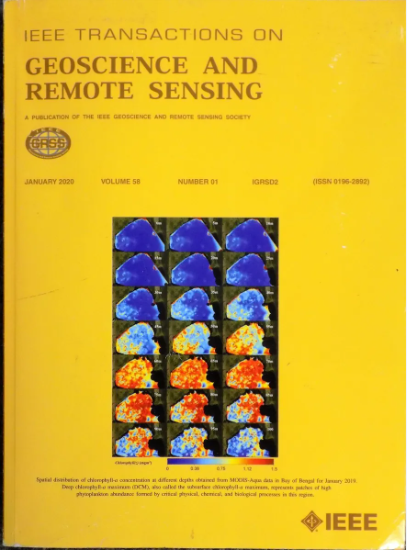利用面向结构的最小熵稳定器进行多道次地震阻抗反演
IF 7.5
1区 地球科学
Q1 ENGINEERING, ELECTRICAL & ELECTRONIC
IEEE Transactions on Geoscience and Remote Sensing
Pub Date : 2024-09-17
DOI:10.1109/TGRS.2024.3462797
引用次数: 0
摘要
作为一个重要的弹性参数,地震声阻抗通常通过叠后反演获得。然而,通常有两个问题会限制反演结果的质量。首先,传统反演方法通常使用正则化项来增强反演结果的稳定性,而有效的正则化项对于准确反演地震阻抗尤为重要。其次,大多数反演方法采用逐条地震道反演策略,导致将所有地震道的反演结果连接成二维剖面时,横向连续性较差,尤其是在处理噪声数据时。为了解决这两个问题,我们提出了一种面向结构的声阻抗反演最小熵稳定器,它能增强反演结果的横向连续性,同时恢复地层的块状结构,提高反演结果的分辨率。稳定器由面向结构的正则化(SOR)算子和最小熵规范组成。SOR 算子是利用平面波破坏(PWD)算法从地震数据中估算出的局部倾角构建的,它沿着结构趋势约束反演阻抗,使其更符合地质特征。最小熵准则恢复了块状结构,并通过对阻抗的时间和空间导数施加稀疏约束提高了分辨率。基于合成和野外地震数据,我们比较了拟议方法与传统的 Tikhonov 正则化方法和总变异(TV)正则化方法的反演结果。结果表明,所提出的方法性能优越,尤其是在处理噪声数据时。本文章由计算机程序翻译,如有差异,请以英文原文为准。
Multitrace Seismic Impedance Inversion With Structure-Oriented Minimum Entropy Stabilizer
As an important elastic parameter, seismic acoustic impedance is usually obtained through poststack inversion. However, there are usually two problems that limit the quality of the inversion results. First, conventional inversion methods typically use regularization terms to enhance the stability of the inversion results, and effective regularization terms are particularly important for accurately inverting seismic impedance. Second, most inversion methods adopt a trace-by-trace inversion strategy, resulting in poor lateral continuity when connecting the inversion results of all traces into a 2-D profile, especially for processing noisy data. To address these two problems, we propose a structure-oriented minimum entropy stabilizer for acoustic impedance inversion that enhances the lateral continuity of the inversion results while restoring the blocky structures of the strata and improving the resolution of the inversion results. The stabilizer consists of a structure-oriented regularization (SOR) operator and the minimum entropy norm. The SOR operator is constructed using the local dip estimated from the seismic data by the plane-wave destruction (PWD) algorithm and constrains the inverted impedance along the structural trend, making it more consistent with geological features. The minimum entropy norm restores the blocky structures and enhances resolution by imposing sparse constraints on the temporal and spatial derivatives of the impedance. Based on synthetic and field seismic data, we compare the inversion results of the proposed method with those of conventional Tikhonov regularization and total variation (TV) regularization methods. The results show that the proposed method exhibits superior performance, especially in processing noisy data.
求助全文
通过发布文献求助,成功后即可免费获取论文全文。
去求助
来源期刊

IEEE Transactions on Geoscience and Remote Sensing
工程技术-地球化学与地球物理
CiteScore
11.50
自引率
28.00%
发文量
1912
审稿时长
4.0 months
期刊介绍:
IEEE Transactions on Geoscience and Remote Sensing (TGRS) is a monthly publication that focuses on the theory, concepts, and techniques of science and engineering as applied to sensing the land, oceans, atmosphere, and space; and the processing, interpretation, and dissemination of this information.
 求助内容:
求助内容: 应助结果提醒方式:
应助结果提醒方式:


